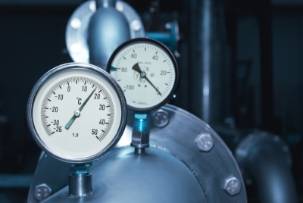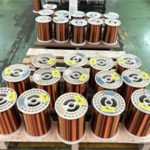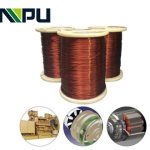As a key material for motor and transformer windings, the performance of enameled wire directly affects the efficiency and reliability of the modified equipment. Understanding the basic classification and characteristics of enameled wire is a prerequisite for reasonable selection. Enameled wire is mainly composed of conductor (copper or aluminum) and insulating paint layer. According to the material composition, temperature resistance grade and process characteristics of the insulating paint, it can be divided into multiple types, each of which has its specific application scenario in motor and transformer modification.
In the practice of motor and transformer modification, the automatic winding process requires the enameled wire to have appropriate softness and scratch resistance, while the mechanical strength of the paint film needs to be considered when rewinding large motors. Polyesterimide enameled wire performs well in this regard. Its paint film has good flexibility and is suitable for high-speed winding (up to 15,000 rpm). It also has good heat shock resistance and is not easy to crack in the temperature changes caused by frequent start-stop of the motor. It is worth noting that the compatibility of enameled wire with the insulation system is also a key factor for successful modification. For example, polyester enameled wire cannot be in direct contact with chlorine-containing materials (such as PVC), otherwise it will cause accelerated aging of insulation; in the sealing system, it is also necessary to avoid using it with incompatible materials such as fluororubber.
In the modification of new energy drive motors, the selection of corona-resistant enameled wire is particularly critical. The 800V high-voltage platform has become an industry trend, which puts higher requirements on winding insulation. Actual modification data shows:
– The corona starting voltage of ordinary enameled wire in an 800V system is only about 400V;
– Corona-resistant enameled wire can increase the corona starting voltage to more than 650V, and can reach 750V with slot insulation optimization.
When modifying transformers for high-power charging piles, it is also necessary to consider the **skin effect** of enameled wires-the current is concentrated on the surface of the conductor at high frequencies. It is recommended to use multiple strands of fine wires in parallel or Litz wire structure to reduce AC losses.
The modification of motors and transformers is a systematic project. The selection of enameled wires not only needs to consider the performance parameters of the material itself, but also needs to comprehensively evaluate the working environment of the equipment, the compatibility of the insulation system, and the modification process requirements. Correct selection can significantly improve the reliability of the modified equipment, while incorrect selection may lead to premature insulation failure or even equipment burnout.
The principle of temperature resistance matching is the primary criterion for enameled wire selection. When modifying, it is necessary to ensure that the heat resistance level of the selected enameled wire is not lower than that of the original equipment insulation system, and to consider that the actual operating temperature may be higher than the rated value. Practical experience shows that:
– Y series motor modification usually uses Class B (130℃) polyester enameled wire (QZ).
– Y2 series motors are recommended to use Class F (155℃) modified polyester enameled wire (QZ(G)) because it has a larger temperature rise margin.
– High-efficiency motors and variable frequency motors should choose Class H (180℃) polyester imide enameled wire (QZY) or higher.
– Dry-type transformer modification mostly uses Class H or Class C enameled wire because its hot spot temperature may be far higher than the average.
Insulation system compatibility is a key factor in the success of modification. Enameled wire must be chemically compatible with slot insulation, phase insulation, impregnation varnish and other materials, otherwise it will lead to accelerated deterioration of insulation performance. Important precautions include:
– Polyester enameled wire is strictly prohibited from contacting with chlorine-containing materials (such as PVC), otherwise it will cause hydrogen chloride corrosion.
– When using polyimide enameled wire, it should be matched with high-temperature resistant impregnation varnish (such as silicone resin), and ordinary impregnation varnish may crack at high temperature.
– Oil-resistant enameled wire (such as polyesterimide or polyamideimide) should be used for oil cooling equipment modification. Ordinary polyester enameled wire will swell and peel in oil.
– When modifying variable frequency motors, corona-resistant enameled wire should be used in conjunction with anti-corona varnish to form a multi-layer protection system.
With the increasingly stringent global environmental protection regulations and the popularization of the concept of sustainable development, the motor and transformer modification industry is undergoing a green revolution. As one of the core materials of this revolution, environmentally friendly enameled wire has shown significant advantages in reducing VOC emissions, reducing the use of harmful substances, and improving energy efficiency.





